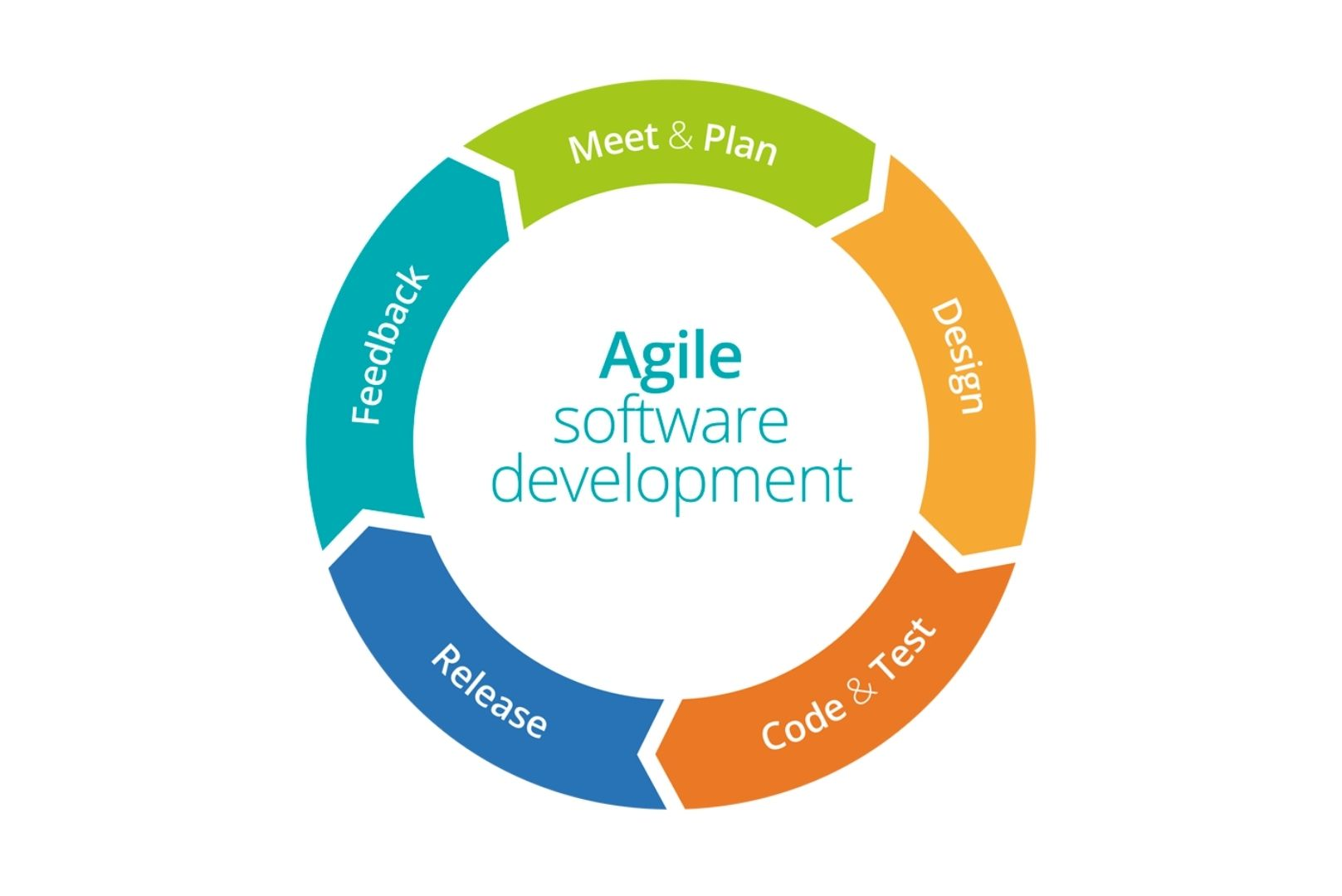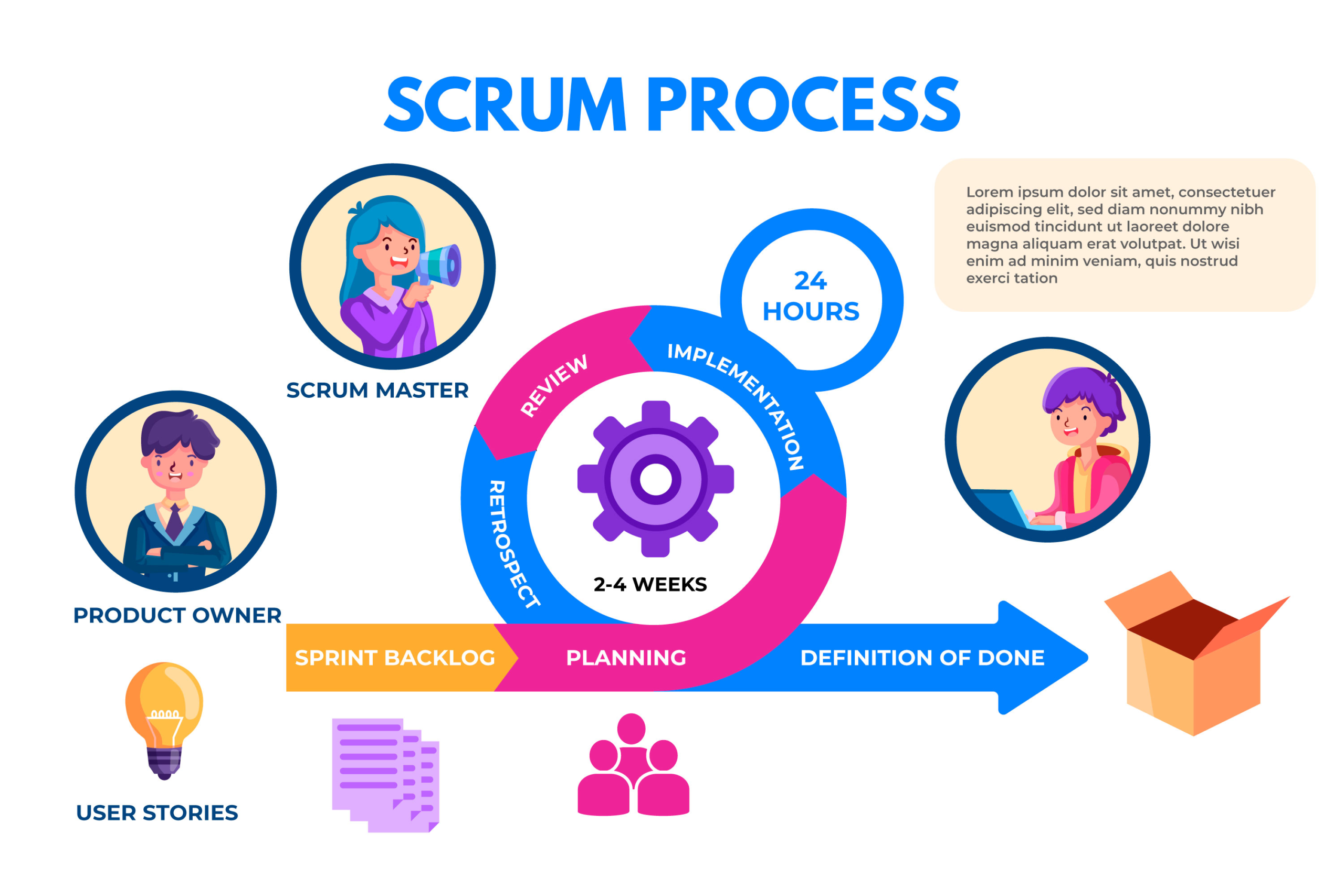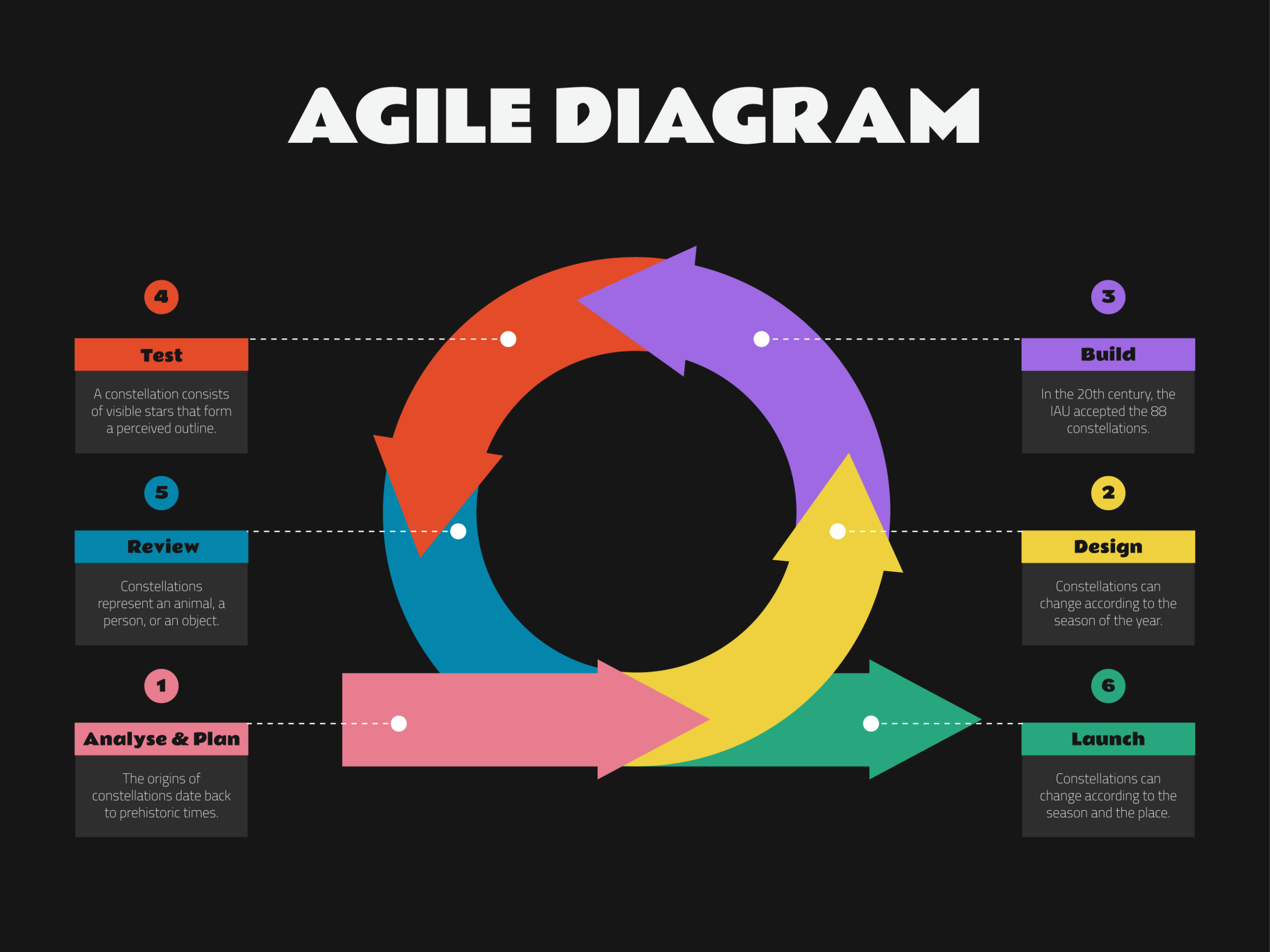In the dynamic and rapidly changing corporate world, it’s essential for businesses to remain competitive and responsive to market demands by embracing agile practices. The conventional methods of project management have given way to more flexible and adaptive approaches, emphasizing iterative development and continuous feedback. This shift has also affected the traditional roles within organizations, particularly that of Business Analysts (BAs).
As agile software development methodologies have gained popularity, BAs have had to adjust their roles and responsibilities to align with Agile’s principles and values. In this article, we’ll delve into the changing role of BAs in software teams within the context of agile software development and recognize the significance of Agile in modern project management. Furthermore, we’ll explore the Agile Manifesto and its influence on project execution and management.

An Overview of Agile Project Management
Adaptable and contemporary, Agile project management has become widely acclaimed across diverse industries. It emerged as a solution to the shortcomings of inflexible traditional project management methods and is specifically tailored to handle the fluid and constantly evolving nature of projects in the fast-moving corporate world.
Central to Agile project management are its focal points on collaboration, customer-centricity, and perpetual enhancement. By adopting Agile, project teams can adeptly adapt to evolving requirements, market dynamics, and customer input, resulting in enhanced value delivery to stakeholders and customers alike.

Key Characteristics of Agile Project Management
Iterative Development: Agile projects are executed in short, predetermined iterations called sprints, each lasting one to four weeks, resulting in a potentially shippable product increment.
Customer Collaboration: Agile project management prioritizes continuous customer involvement throughout the project lifecycle. Active solicitation of customer feedback is integral to the software development process, ensuring the final product aligns with customer needs and expectations.
Flexibility and Adaptability: Agile projects embrace change as a natural aspect of development. They are designed to accommodate evolving requirements and priorities, enabling project teams to adjust plans and strategies accordingly.
Cross-Functional Teams: Agile project teams are self-organizing and cross-functional, comprising members with diverse skills and expertise. This structure fosters collaboration, swift decision-making, and a heightened sense of ownership over project outcomes.
Prioritization and Value Delivery: Agile project management concentrates on delivering the most valuable features and functionalities early on. Backlog prioritization is driven by business value and customer feedback.
Continuous Improvement: Agile fosters a culture of regular self-reflection for teams. Retrospective meetings held at the end of each sprint help identify improvement areas and implement changes to boost productivity and product quality.

Benefits of Agile Project Management
Accelerated Time-to-Market: Agile projects excel in delivering value swiftly through short iterations, enabling rapid releases and continuous delivery of functional product increments.
Enhanced Customer Satisfaction: Continuous customer involvement ensures that the final product meets and exceeds customer expectations, delivering significant value to end-users.
Flexibility and Adaptability: Agile projects possess the agility to swiftly respond to changing requirements, market conditions, and business needs, maintaining a competitive edge in a dynamic environment.
Minimized Project Risks: Frequent feedback and ongoing testing enable early detection and resolution of issues, mitigating the risk of costly defects and project failures.

In summary, Agile project management embraces a customer-centric and adaptive approach, empowering project teams to deliver high-quality products promptly amidst the ever-changing business landscape. By promoting collaboration, flexibility, and continuous improvement, Agile empowers organizations to achieve project success and surpass customer expectations.
The Role of Business Analysis in Agile
Agile software development has become the go-to approach for modern organizations looking to stay competitive in today’s dynamic business landscape. Its iterative and customer-centric nature allows software development teams to respond quickly to changing requirements, deliver incremental value, and continuously improve their processes. At the heart of this successful transformation lies the critical role of Business Analysis (BA) in Agile software development.
Understanding Agile Software Development
Before delving into the role of Business Analysis, let’s briefly recap what Agile software development is all about. Agile is a set of values and principles outlined in the Agile Manifesto, which emphasizes individuals and interactions over processes and tools, working software over comprehensive documentation, customer collaboration over contract negotiation, and responding to change over following a plan.
Any Agile methodology, such as Scrum, Kanban, and Extreme Programming (XP), provides specific frameworks for implementing Agile principles. They promote iterative development, continuous feedback, and a focus on delivering value to customers in short cycles known as sprints.

The Role of Business Analysis in Agile Software Development
Business Analysis plays a crucial role in bridging the gap between business needs and software development. In Agile, BAs act as key facilitators and enablers, ensuring that the software development process always stays customer-centric and aligns with business goals. Let’s explore the specific responsibilities and contributions of BAs in Agile software development:
Requirements Elicitation and Management
Business Analysts (BAs) work in close collaboration with stakeholders, product owners, and the software development team to effectively elicit, gather, and manage project requirements. Through adept communication and elicitation techniques, BAs ensure a comprehensive understanding of all stakeholders’ needs and expectations for sustainable development, which are then translated into actionable requirements.
User Stories and Acceptance Criteria
In the Agile approach, requirements are frequently documented as user stories, representing specific user interactions with the software. BAs collaborate with stakeholders to craft clear and concise user stories, accompanied by well-defined acceptance criteria. These criteria serve as objective measures to ascertain when a user story has been satisfactorily implemented.
Prioritization and Backlog Management
In Agile project management, the product backlog is a prioritized list of user stories and features awaiting development. BAs work closely with product owners and stakeholders to prioritize items based on their business value and customer needs. This ensures that the most valuable features are delivered early in the development process.
Collaboration with Development Teams
BAs play an essential role within Agile development teams, collaborating closely with developers, testers, and designers. They provide clarifications on requirements, gather feedback, and ensure a shared understanding of the product vision among team members.
Continuous Feedback and Iterative Refinement
Within the Agile framework, BAs embrace a continuous feedback loop, gathering input from stakeholders and customers at every development stage. This feedback informs iterative refinements and improvements to the product, resulting in a closer alignment with business goals and customer expectations.

Validation and Verification
BAs assume a crucial role in the validation and verification process, ensuring that the developed software aligns with the defined requirements. They meticulously conduct tests to ascertain that the product meets the specified acceptance criteria before it is released to users.
Adapting to Change
In the Agile environment, change is embraced, and BAs excel at accommodating shifting requirements and priorities. Collaborating closely with stakeholders, they comprehensively understand the implications of changes and facilitate the adjustment of project scope and priorities accordingly.
The Significance of Business Analysis in Agile
The role of Business Analysis in Agile methodologies is indispensable for ensuring the triumphant execution of software development projects. Here are the key reasons why BAs play a vital role in Agile:
Customer-Centricity
BAs function as dedicated advocates for customers, ensuring their needs and preferences are thoroughly considered throughout the development process. By actively seeking and incorporating customer feedback, BAs contribute to delivering products that not only meet but surpass customer expectations.
Clear Communication
Effective communication is paramount in Agile, where collaboration is central to project success. BAs facilitate transparent and precise communication between stakeholders and development teams, minimizing misunderstandings and ensuring a shared understanding among all involved parties.
Improved Decision-Making
Equipped with data-driven insights and thorough analysis, BAs assist in making informed decisions at every stage of the development process. This fosters quicker and more accurate decision-making, propelling the project toward successful outcomes.

Hazard Minimization
BAs play a pivotal role in recognizing and alleviating hazards early on in the software development journey. By performing thorough assessments and validating requisites, BAs proactively decrease the chances of expensive flaws and project setbacks.
Productive Development Procedure
Through skillful requisites management and efficient backlog prioritization, BAs simplify the development procedure. This guarantees that development endeavors are focused on providing the most valuable characteristics, optimizing return on investment, and enhancing project efficiency.
The Agile Organizational Structure
Dynamic organizations commonly embrace a variety of Agile delivery methods, with Scrum being particularly prominent. In Scrum teams, BAs align with the product owner role. The product owner advocates for the customer’s perspective, while BAs bridge the gap between business requirements and development teams. This collaboration ensures that the development process remains customer-centric and addresses the most critical priorities.
The Agile development process consists of three key stages: planning, execution, and review. During the planning phase, the team defines the project scope and establishes goals for each sprint. The execution phase involves incremental product development and testing. Lastly, the review phase incorporates sprint review and retrospective meetings, where the team assesses the sprint’s outcomes and identifies areas for enhancement.
Agile Organization and BAs
Agile organizations exhibit shared traits that empower them to swiftly adapt to evolving requirements and market demands. They often adopt flatter organizational structures, granting teams the autonomy to make prompt decisions. Embracing change is a fundamental tenet of Agile, and BAs hold a pivotal position in analyzing team performance and proposing enhancements to optimize project outcomes.
In Agile environments, efficient communication is paramount, and BAs take on the role of facilitators, fostering mutual comprehension between development teams and product owners. This close collaboration minimizes misunderstandings and facilitates the delivery of precisely the right product features that resonate with customer expectations.

Agile project management enhances the on-time and budget completion of projects. By breaking down the project into smaller sprints, progress can be measured more effectively, allowing agile teams to course-correct if necessary.
Revising the Role of BAs in Agile
As BAs make their way into the Agile realm, they encounter the challenge of harmonizing change with the preservation of core functions that have proven valuable in traditional project management. It is imperative not to disregard or dismiss pre-existing job functions and roles, but rather to adeptly adapt and integrate them into the Agile framework.
Refraining from renaming roles without comprehending their significance can result in confusion and reduced efficiency. The transformation of BAs in Agile should emphasize safeguarding their core function while embracing Agile practices and embracing novel prospects for growth and collaboration.
Benefits of Agile Development Methodology:
Agile development brings numerous benefits to projects and organizations. It allows for increased flexibility in making changes, ensuring that the final product meets the evolving needs of customers and stakeholders.
Almost every Agile methodology also emphasizes continuous feedback and collaboration, leading to improved communication between agile teams and faster problem-solving. By breaking down complex projects into smaller sprints, Agile reduces risks associated with large-scale initiatives.
The Path to Thriving as Agile Business Analysts
To thrive as Business Analysts in Agile, professionals must adapt to the new organizational structure and embrace their role as crucial members of Agile teams. BAs have the opportunity to evolve into Business Analysts or even Product Owners, where they can directly influence project direction and priorities.
To succeed in an Agile environment, specialized knowledge and capabilities training are crucial. BAs must continuously seek opportunities to enhance their skills in areas such as different agile methodologies, agile testing, product management, and effective communication.

In Agile, success is a team effort. BAs must foster a collaborative and supportive environment for the agile team, where team members work together to generate innovative solutions and continuously improve their processes.
Disadvantages of Agile Development Methodology
While every Agile methodology offers many advantages, they also present certain challenges. For some project managers and owners, Agile might feel less controllable compared to traditional approaches, as Agile emphasizes self-organizing teams and adaptive planning. Additionally, Agile projects may have less documentation compared to traditional methodologies, which can be a concern for stakeholders who are accustomed to comprehensive documentation.
Agile also places a high emphasis on collaboration and face-to-face communication, which can be challenging for remote or distributed agile teams. Lastly, for complex projects, Agile’s iterative approach might require longer time requirements than traditional sequential approaches.
Comparison of Agile Methodologies
Agile development is a broad term encompassing various methodologies. Scrum is one of the most widely known Agile frameworks, characterized by time-boxed iterations known as sprints. Another popular Agile approach is Kanban, which focuses on visual project management and task coordination. Extreme Programming (XP) is yet another Agile methodology, emphasizing best practices for quality and shareholder satisfaction.
Agile vs. Scrum
Comparing Agile to Scrum reveals that Scrum is a specific implementation of Agile principles. While both emphasize iterative development and customer collaboration, Scrum provides a more structured framework with its time-boxed sprints, facilitating better project management.
Kanban
Kanban’s visual approach to agile project management makes it suitable for dynamic projects with changing priorities. Its emphasis on task coordination ensures that teams can respond quickly to customer needs.
XP
Extreme Programming (XP) focuses on best practices for quality, including test-driven development and continuous integration. XP is ideal for projects where maintaining high code quality is critical.

Conclusion
Agile software development has revolutionized project management, providing organizations with flexibility, adaptability, and customer focus. Business Analysts (BAs) play a critical role in Agile, ensuring effective communication and meeting customer expectations. Embracing the BA’s evolution and honing Agile skills empowers them to thrive. As organizations adopt Agile methodologies, solutions like ALM Octane promise improved application delivery and project success. BAs act as change agents, fostering collaboration and a culture of continuous improvement. With BAs driving effective requirements management and collaboration, Agile organizations excel and innovate in a dynamic landscape.
FAQs
What are agile methods for business analysis?
Agile methods for business analysis involve applying Agile principles to the process of gathering, managing, and validating requirements. BAs work closely with stakeholders and development teams in their iterative software development cycles to deliver value incrementally, ensuring the project remains customer-centric and adaptable to change.
How the Agile methodology has been evolved?
The Agile methodology has evolved through the collaboration of software developers who sought a more adaptive and customer-focused approach to software development. The Agile Manifesto, formulated in 2001, laid the foundation for Agile principles, emphasizing iterative development, customer collaboration, and responding to change.
What is the history of business analysis?
The history of business analysis dates back to the 1970s, with its roots in systems analysis and design. Over time, it expanded beyond the IT industry to encompass a broader range of domains, such as finance, healthcare, and marketing. BAs have become essential in bridging the gap between business needs and technology solutions.
What is the business value analysis in Agile methodology?
Business value analysis in Agile methodology involves continuously assessing and prioritizing requirements based on their potential value to the business and customers. BAs collaborate with stakeholders to determine the most valuable features and ensure that the development efforts align with business goals, delivering high-impact solutions.
What is an Agile software development example?
An example of Agile software development is Scrum. It is a popular Agile framework that uses fixed-length iterations called sprints to deliver incremental value. The development team works on prioritized user stories during each sprint, typically lasting two to four weeks. Daily stand-up meetings keep the team aligned, and at the end of each sprint, a review and retrospective meeting are held. Scrum’s iterative and customer-focused approach allows for continuous feedback, adaptability to change, and frequent delivery of valuable software features to customers.



